The air quality can be assessed by two characteristics: particulate matter and chemical composition. For the two types of changes that can occur in ambient air, specific monitoring technologies exist, using appropriate sensors.
At Mouser Electronics, readers can find sensors of both types for project development and also evaluation and development boards, which makes it easier for an interested designer.
We analyzed the main types.
NDIR Infrared Sensors
NDIR is the acronym for Nondispersive InfraRed.
What happens is that in ambient air or another mixture of gases, the dispersion of infrared radiation at certain wavelengths occurs as a function of the concentration of carbon dioxide (CO2) or carbon monoxide (CO).
Thus, a basic sensor consists of an infrared emitter and an infrared sensor in a chamber where the air sample can be placed or where this air enters through openings, as shown in Figure 1.
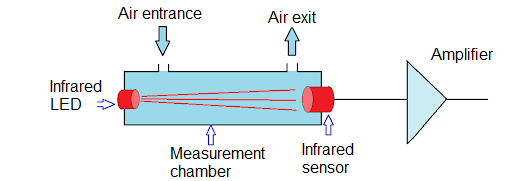
The signal obtained at the output of the circuit has an intensity proportional to the attenuation of the infrared radiation, which in turn depends on the concentration of the pollutants analyzed.
Electrochemical Sensors
This type of sensor is based on changes in the electrical properties of certain materials in the presence of pollutants. This type of sensor is used in the lambda probe of automobiles that measures the oxygen concentration at the exhaust outlet and thus determines whether there has been a complete fuel combustion.
In Figure 2, we have the basic structure of a sensor of this type.
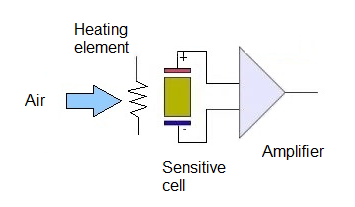
A variation of this type of sensor is used to detect combustible gas escapes in alarms.
Electroacoustic Sensor
For the detection of CO and CO2, we also have the electroacoustic sensor technology that, in a way, resembles the technology used in the case of infrared sensors.
What happens is that, just as in the case of infrared radiation, ultrasounds have their behavior altered when they propagate in the air due to the concentration of CO and CO2.
Thus, we can measure the reflection of the ultrasound in a chamber into which the ambient air enters and thereby have an idea of its degree of contamination, as shown in Figure 3.
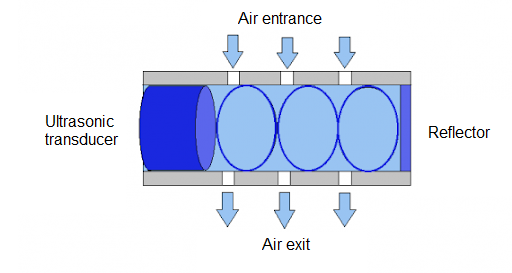
Ozone Sensors
Although a small amount of ozone in the air is interesting nowadays, due to its bactericidal properties, the excess is dangerous and can affect us.
Thus, in the control of the ambient air, ozone sensors find specific applications. Let's see how they work.
In this type of sensor, the air passes through a filter reaching a sensor electrode, where a chemical reaction occurs. This reaction causes a voltage to be generated which can then be measured by an external circuit.
In Figure 4, we have the basic structure of this type of sensor.
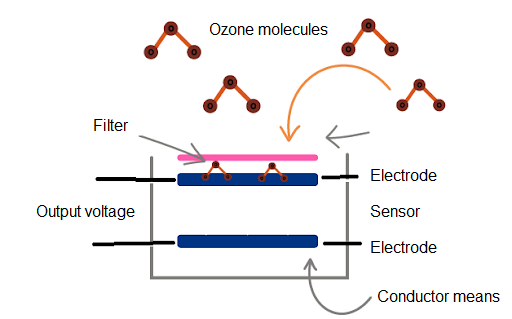
Particulate Matter (PM) Sensors
The most common types are those which take advantage of the reflection or refraction of light when it passes through the air in which there are particles in suspension. These particles are then illuminated and can be detected by a common photoelectric sensor.
In figure 5, we have the PM 2.5 by Alta, an air quality sensor capable of measuring particles in the range of 0.3 to 10 µm in three categories. Access the datasheet at: https://br.mouser.com/datasheet/2/945/ADS-063-PM25-Sensor-Data-Sheet-1493984.pdf
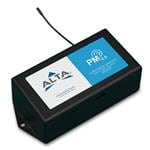
Sulfur Dioxide Sensors and Nitrous Oxide Sensors
These are also important sensors for monitoring the air quality. The degree of complexity varies depending on the application.
In Figure 6, we have a Pyreos pyroelectric infrared sensor for Pyyreos gas sensing, sold by Mouser Electronics.
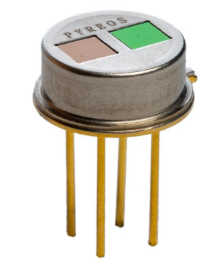
This type of sensor works with filters that let the gas molecules which must be detected pass through and that then alter the propagation of infrared radiation.
We suggest visiting the Mouser Electronics website where there is a large number of air quality sensor devices, from which the datasheets allow to analyze the operation, the applications and there are also practical circuits and development boards.




